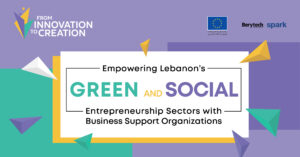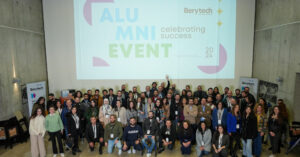 Nagi Salloum opens up on the 10 key lessons he applied to re-build his brand starting from nothing to become one of the top growth experts in Silicon Valley – in record time, and how he is applying the exact same lessons to build a global business.
Nagi Salloum opens up on the 10 key lessons he applied to re-build his brand starting from nothing to become one of the top growth experts in Silicon Valley – in record time, and how he is applying the exact same lessons to build a global business.
His lessons are recommended for professionals starting their careers, the self-employed growing their own brands, entrepreneurs launching new businesses, or anyone intending to build successful brands starting from nothing.
If you don’t ask, you don’t get
To get things done, often times you simply have to ask people. As banal as this might seem, the majority of people aren’t proactive.
Granted, it requires confidence to ask for what may seem sometimes an irrational request. Train yourself by applying the carrot cake test: when you walk into a restaurant or coffee shop, at the end of the meal, ask for a free carrot cake. Insist on getting it for free.
With time you will craft your skill and reinforce your confidence to sell potential clients, close a partnership or finalize an agreement that will make people ask “How were you able to do that?”. And your reply? “I simply asked.”
Ethically steal (with pride)
In the early life of your business, given that the odds are stacked against new startups, your job relies primarily on your ability to increase your chance of success. Avoid wasting time, money, and resources on building things from scratch, whether that’s about your product, communication plan or even go-to market strategy.
A quick way is to identify the closest successful competitor with a sizable team and investment and ethically “steal” how they designed their product, crafted their positioning and overall plan.
Once you demonstrate some traction, then adapt to fit your brand and own flavor. This hack, albeit controversial, will save valuable irrecuperable time and resources.
Eliminate limiting beliefs
Given the unstable nature of startups, you will inevitably be tested to your limits, your self-confidence will be impacted and shaken to its core.
It’s critical for the success of your startup to embrace yourself with utmost positivity and resilience to keep moving forward against all adversity and roadblocks.
This also means insulating yourself from negative sources that drain your energy, including negative friends, politics and TV, by silencing the voice that whispers doubt in your ear, and by avoiding words charged with negativity (can’t, don’t know how, not possible, try).
Answer ‘WIIFT’
Fact is people don’t care about your product or what you do. Nobody does (except your mother). And so the golden question in business (and arguably in life) is to answer the WIIFT question.
This acronym stands for ‘what’s in it for them’.
Aligning the answer to this question to every party you’re talking to is critical to influencing people to make them act. And so remember, you’re not talking to a company, you’re talking to people at that company, and what you need to be doing is preempting their potential objections, identify their professional and life priorities, and highlight how your business will help achieve them. Only then they will be receptive to your message and take action.
Start with the end in mind
Everything starts with a clear intention of what you aim to achieve. Don’t get stuck on the lofty goal that you might end up achieving in 10 years or even 5 years. Break down your milestones intro micro-achievement that can fit 30 days and 90 days and that are easy for you to visualize and articulate. Keep them stretched but achievable.
This exercise will keep the whole team in sync and energized by accomplishing digestible milestones along the way.
Identify anchor client
As a new startup, trust and credibility are two essential factors that will determine whether people will do business with you or not.
Like all new startups, you will face the eternal chicken or the egg dilemma: to get clients, you need a portfolio, but to create a portfolio you need clients.
A way to solve it is to use what I call an anchor client: this is a recognized established and trusted brand that will seed the way for others to do business with you.
Your objective here is not to aim for profit or sometimes even revenue, but rather to close them. This anchor client will offer you the required credibility and social proof necessary to close subsequent clients and kickoff the domino effect.
Apply the 3-Way Happy model
At its core, the 3-Way Happy model consists of getting others to market you, in most cases for free.
This model identifies two complimentary parties that normally wouldn’t do business together, but would benefit by working together. Your business would be the glue and catalyst to make it happen.
This is also commonly known as a win-win-win model and can be a great way to market your product to the masses without spending any budget on marketing.
Follow the 10/90/1 Rule
Everyone is overloaded and busy, everyone has their own priorities, and everyone has their plates full. So accept the reality that you invest disproportionate time in follow-ups, because chances are you won’t get the desired results you aim for.
The simplest formula that I devised is the 10/90/1 rule which consists of 10% time of pitching, 90% time on following up with people you contacted, and 1% of those will convert and do business with you.
Once implemented, this rule will set proper expectations on the health of the business, your funnel and ultimately expected results and lead times.
Move slow to grow fast
Most entrepreneurs are obsessed with scaling and growing fast prematurely. They invest in marketing campaigns, media outreach and even hiring before they’ve even crafted the right funnel that is optimized for growth. Instead, aim to grow slowly in the early stages to figure out your right positioning, your conversion funnels, the proper distribution channels, and even the responsive target audiences.
This will also allow you to optimize your product flows and retention plans. Not doing so is a sure recipe for failure.
Believe
Building a startup is hard, it will test you to the limits. You will face many setbacks and hardships. The default answer from people will be ‘no’ (or they’ll ignore your emails). Remember a ‘no’ is not always a no, it might be that they’re not ready yet.
You have to keep persevering and believing in your intuition, in your hard work and in your ability to make things happen.
There’s a reason successful people consistently mention perseverance, resilience, grit, and determination as foundational ingredients for their success.
Keep believing, otherwise, no one else will.
 / About the writer /
/ About the writer /
Nagi Salloum is a growth expert in Silicon Valley, mentor, trainer, and advisor to 300+ startups from several top global accelerators, including 500 Startups, YC, TechStars, Stanford, StartX and dozens more. He is a Global Full-Stack Growth Mentor for 500 Startups. His clients have exited or raised an estimated $90M+ in capital.
Nagi is also a serial entrepreneur, having launched and sold several startups, currently the founder and CEO of Loomni.com, a global on-demand marketing platform based out of Silicon Valley. He’s also the lead trainer of Loomni Academy having taught more than 8,000 startups, both online and in dozens of cities around the world.
Prior to that, he was the CMO at Tango, a unicorn and world’s largest video calling app. Before moving to the US, Nagi was the CMO at N2V, one of the largest tech investment group in the Middle East, the first regional marketing executive at Google handling 32 countries, and a regional brand manager at Procter and Gamble.
Nagi holds a bachelor in electrical engineering from AUB, an MBA from Michael Smurfit business school in Ireland, and marketing executive education from Harvard.







